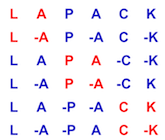125 REAL FUNCTION CLANGB( NORM, N, KL, KU, AB, LDAB,
136 INTEGER kl, ku, ldab, n
140 COMPLEX ab( ldab, * )
147 parameter( one = 1.0e+0, zero = 0.0e+0 )
151 REAL sum,
VALUE, temp
154 REAL ssq( 2 ), colssq( 2 )
164 INTRINSIC abs, max, min, sqrt
170 ELSE IF(
lsame( norm,
'M' ) )
THEN
176 DO 10 i = max( ku+2-j, 1 ), min( n+ku+1-j, kl+ku+1 )
177 temp = abs( ab( i, j ) )
178 IF(
VALUE.LT.temp .OR.
sisnan( temp ) )
VALUE = temp
181 ELSE IF( (
lsame( norm,
'O' ) ) .OR. ( norm.EQ.
'1' ) )
THEN
188 DO 30 i = max( ku+2-j, 1 ), min( n+ku+1-j, kl+ku+1 )
189 sum = sum + abs( ab( i, j ) )
191 IF(
VALUE.LT.sum .OR.
sisnan( sum ) )
VALUE = sum
193 ELSE IF(
lsame( norm,
'I' ) )
THEN
202 DO 60 i = max( 1, j-ku ), min( n, j+kl )
203 work( i ) = work( i ) + abs( ab( k+i, j ) )
209 IF(
VALUE.LT.temp .OR.
sisnan( temp ) )
VALUE = temp
211 ELSE IF( (
lsame( norm,
'F' ) ) .OR. (
lsame( norm,
'E' ) ) )
THEN
225 CALL classq( min( n, j+kl )-l+1, ab( k, j ), 1,
226 $ colssq( 1 ), colssq( 2 ) )
229 VALUE = ssq( 1 )*sqrt( ssq( 2 ) )

